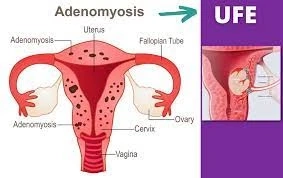Adenomyosis is a condition that affects many women, causing significant discomfort and impacting daily life. Understanding its symptoms, causes, and treatment options is crucial for those affected and their healthcare providers.
Introduction Adenomyosis is a gynecological condition where the inner lining of the uterus (endometrium) breaks through the muscle wall of the uterus (myometrium). This can lead to heavy, prolonged menstrual bleeding, severe cramping, and discomfort. Despite its prevalence, adenomyosis often goes undiagnosed or misdiagnosed, leading to prolonged suffering for many women.
Symptoms of Adenomyosis The symptoms of adenomyosis can vary from woman to woman but commonly include:
Heavy Menstrual Bleeding: Excessive bleeding during periods, often requiring frequent changes of pads or tampons.Severe Menstrual Cramps: Painful cramping that may be debilitating and resistant to over-the-counter pain medications.Pelvic Pain: Constant or intermittent pain in the pelvic region, which may worsen during menstruation.Abdominal Pressure: A feeling of heaviness or bloating in the lower abdomen.Causes and Risk Factors While the exact cause of adenomyosis remains unclear, several factors may contribute to its development:
Hormonal Influence: Estrogen dominance or hormonal imbalances may play a role in the growth and spread of endometrial tissue within the myometrium.Childbirth: Women who have had multiple pregnancies or undergone uterine surgery may be at higher risk.Middle Age: Adenomyosis commonly affects women in their 40s and 50s, although it can occur at any age.Previous Uterine Surgery: Procedures such as cesarean sections or fibroid removal may increase the likelihood of adenomyosis.Diagnosis Diagnosing adenomyosis can be challenging because its symptoms mimic those of other gynecological conditions, such as fibroids or endometriosis. However, several diagnostic tools can aid in identifying adenomyosis:
Pelvic Exam: A physical examination may reveal an enlarged or tender uterus.Ultrasound: Transvaginal ultrasound can provide detailed images of the uterus, helping to detect abnormalities.Magnetic Resonance Imaging (MRI): MRI scans offer more precise images and can confirm the presence of adenomyosis.Biopsy: In some cases, a tissue sample (biopsy) may be taken to confirm the diagnosis.Treatment Options Treatment for adenomyosis depends on the severity of symptoms and the patient's reproductive plans. Options include:
Medications: Nonsteroidal anti-inflammatory drugs (NSAIDs) or hormonal therapies (such as birth control pills or hormonal IUDs) can help manage symptoms.Minimally Invasive Procedures: Procedures like endometrial ablation or uterine artery embolization may be recommended to reduce symptoms.Hysterectomy: In severe cases where other treatments have failed or if the woman has completed childbearing, surgical removal of the uterus (hysterectomy) may be considered.Living with Adenomyosis Managing adenomyosis involves not only medical treatment but also lifestyle adjustments to alleviate symptoms:
Pain Management: Heat therapy, relaxation techniques, and adequate rest can help manage pelvic pain and discomfort.Healthy Diet: Eating a balanced diet rich in fruits, vegetables, and whole grains can support overall health and possibly reduce inflammation.Regular Exercise: Physical activity can help improve mood, reduce stress, and alleviate symptoms like cramping.Conclusion Adenomyosis is a challenging condition that can significantly impact a woman's quality of life. By understanding its symptoms, causes, and available treatment options, women and healthcare providers can work together to manage symptoms effectively and improve overall well-being.
References Include credible sources such as medical journals, healthcare organizations, and authoritative websites.
This article provides a comprehensive overview of adenomyosis, covering its symptoms, causes, diagnosis, treatment options, and lifestyle management strategies. It aims to educate readers and provide valuable information for those affected by this condition.


